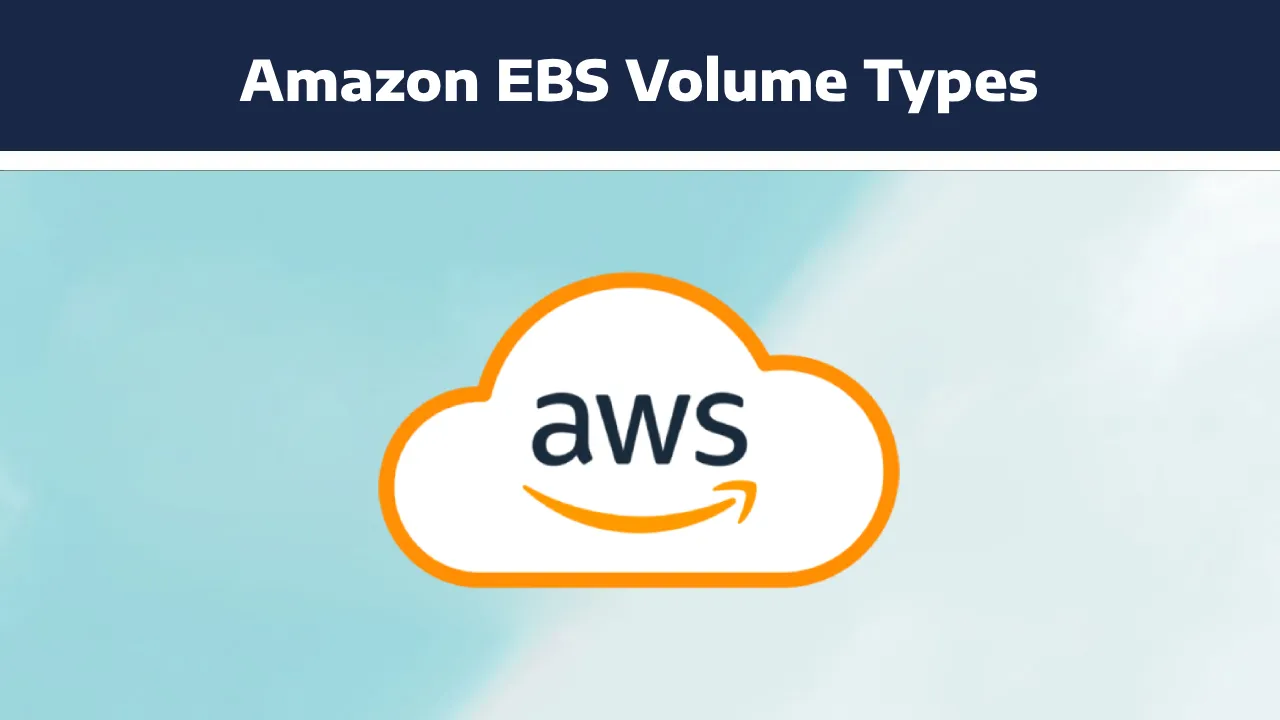In-Depth Guide to Amazon EBS Volume Types
Amazon Elastic Block Store (EBS) provides scalable block storage volumes for use with Amazon EC2 instances. EBS volumes play a critical role in storing data for applications and workloads in the AWS cloud. Understanding the various EBS volume types is essential for optimizing performance, durability, and cost-effectiveness based on specific use cases. In this comprehensive guide, we will explore the intricacies of EBS volume types, including their characteristics, advantages, and best practices for selecting the right storage solution.
1. Introduction to EBS Volume Types
1.1 Purpose and Importance
EBS volumes serve as the primary storage for EC2 instances, providing persistent block-level storage. Different volume types cater to diverse workloads, offering varying performance characteristics, durability, and cost structures.
1.2 EBS Volume Features Overview
EBS volumes are designed to meet specific requirements, offering features such as snapshotting, encryption, and different performance tiers. The choice of volume type depends on factors like performance needs, data access patterns, and application requirements.
2. EBS Volume Types
2.1 General Purpose SSD (gp3)
2.1.1 Description:
- gp3 volumes provide a balance of price and performance, suitable for a broad range of workloads.
2.1.2 Performance:
- Adjustable IOPS (input/output operations per second) and throughput, allowing users to tailor performance to specific needs.
2.1.3 Use Cases:
- Recommended for applications with moderate performance requirements, such as development and testing environments, low to moderate databases, and boot volumes.
2.2 Provisioned IOPS SSD (io2)
2.2.1 Description:
- io2 volumes deliver high durability, low-latency performance, and consistent IOPS.
2.2.2 Performance:
- Provisioned IOPS range from 100 IOPS/GB to 64,000 IOPS per volume.
2.2.3 Use Cases:
- Ideal for I/O-intensive and critical business applications, large relational databases, and applications that demand consistently low-latency storage.
2.3 Throughput Optimized HDD (st1)
2.3.1 Description:
- st1 volumes offer low-cost, high-throughput performance for frequently accessed, throughput-intensive workloads.
2.3.2 Performance:
- Designed for high throughput with a maximum burst capability.
2.3.3 Use Cases:
- Suitable for big data, data warehouses, log processing, and streaming workloads that require high throughput.
2.4 Cold HDD (sc1)
2.4.1 Description:
- sc1 volumes provide low-cost storage for infrequently accessed workloads with large amounts of data.
2.4.2 Performance:
- Low-cost storage with a burst capability for occasional high-throughput requirements.
2.4.3 Use Cases:
- Ideal for scenarios with infrequent access to data, such as backup and restore operations, and where cost optimization is a priority.
2.5 Magnetic (Standard)
2.5.1 Description:
- Standard volumes, while being the oldest type, still offer a cost-effective solution for workloads with low or sporadic I/O.
2.5.2 Performance:
- Suitable for small to moderate workloads with balanced performance requirements.
2.5.3 Use Cases:
- Legacy applications, small databases, and low-traffic websites that do not demand high-performance storage.
3. Key Considerations for Selecting EBS Volumes
3.1 Performance Requirements
- Consider the IOPS and throughput requirements of your workload. Choose a volume type that aligns with the performance characteristics your application demands.
3.2 Cost Optimization
- Evaluate the cost implications of each volume type based on your workload's storage and performance needs. Choose a cost-effective solution without compromising performance.
3.3 Data Durability and Redundancy
- Different volume types offer varying levels of data durability. Consider the criticality of your data and select a volume type that provides the necessary redundancy and durability.
3.4 Application Workload Characteristics
- Analyze the access patterns of your workload. Some applications may benefit from high throughput, while others may require consistent low-latency performance.
4. Best Practices for EBS Volume Management
4.1 Regular Monitoring
- Utilize Amazon CloudWatch to monitor the performance metrics of your EBS volumes. This helps identify potential bottlenecks or issues.
4.2 Snapshots and Backups
- Implement a snapshot strategy based on your recovery point objectives (RPOs) and recovery time objectives (RTOs). Regularly back up critical data to EBS Snapshots for data protection.
4.3 Scaling and Elasticity
- Design your architecture with scalability in mind. Be prepared to scale your EBS volumes to accommodate growing workloads.
4.4 Security and Encryption
- Leverage AWS Key Management Service (KMS) to encrypt sensitive data stored on EBS volumes. Ensure that encryption is enabled, especially for volumes containing critical or regulated data.
5. Conclusion
Choosing the right EBS volume type is a crucial decision for optimizing the storage performance, cost, and durability of your AWS workloads. Each EBS volume type is designed to meet specific use cases and demands, allowing users to tailor their storage solutions to the unique requirements of their applications. By understanding the characteristics of each volume type and considering factors such as performance, cost, and data durability, users can make informed decisions that align with their application workloads. Regular monitoring, backup strategies, and adherence to best practices contribute to a well-architected and efficient storage environment in the AWS cloud. As technology evolves, AWS continues to enhance its storage offerings, providing users with even more options to meet the evolving demands of modern applications.
#aws #awsEBS
